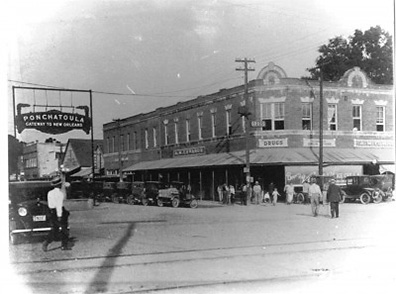History of Tangipahoa Parish
Tangipahoa Parish encompasses a rich history prior to the commercial and agricultural hub it is today. The parish is a physical composite of most of the habitats typical of the lower areas east of the Mississippi River. Prior to 1801, however, the region was sparsely populated, for much of the area was densely forested with pine, oak, gun ash, birch, holly, magnolia, poplar, and cypress.
The name Tangipahoa means “ear of corn” or “those who gather corn,” which refers to a sub-tribe of the Acolapissa. These Native Americans inhabited the area when French brothers Pierre and Jean le Moyne, known as Sieurs Bienville and Iberville, arrived to colonize Louisiana. What would become the southern boundary of Tangipahoa Parish was part of the route used by Native Americans to travel from Mobile and Pensacola, and through Pass Manchac to Illinois and the Great Lake regions. Members of the Acolapissa Tribe led Iberville through Manchac, a shortcut to avoid the long winding Mississippi River, enroute to Biloxi where Bienville waited. The brothers bestowed the names “Maurepas” and “Pontchartrain” on nearby lakes to honor the French finance ministers who supported the New World French colony, which Sieur Bienville named New Orleans.

The French controlled their Louisiana territory in the New World for some time, but later the Spanish government took over the area. Meanwhile, the British controlled the area known as the Florida Parishes. Pass Manchac marked the border between Spanish and British Territory. The Louisiana Purchase of 1803 gave the United States the Louisiana Territory. However, the Florida Parishes was not part of the Purchase.
After a revolt by local citizens in 1810, their flag, a five-pointed star on a blue field, flew over our area, marking the new Independent Republic of West Florida. The revolt by the independent local settlers ceased after seventy-two days, and the area remained an international boundary between Spanish Territory and the United States until 1812 when Louisiana became a state.
The coming of the railroad in the mid 1800s paved the way for development of the area, with business interests developing along the railroad line. Citizens were inconvenienced by the prolonged travel to transact their businesses in the nearby parishes’ seats of government. Thus, they carved their own parish and governmental center from the territory of the four surrounding parishes. The boundaries were fixed, beginning at the state line west of Osyka for four miles, south along the Natalbany Creek and Tickfaw River, along the Lake and the Tchefuncte River to the state line, and west to the place of origin. The boundaries were fixed by legislative law in March 1869, and Tangipahoa Parish was founded. The parish’s motto is “out of four – one.”
The Parish (called ‘county’ in other parts of the United States) is 51 miles long and 18 miles wide. It includes 526,850 acres or 823 square miles. Since Tangipahoa Parish’s founding, the population has steadily increased. In 1870, the population was 7,928. In 1960, the population was 59,434. As of 2017, the population is 132,497.
Source: Out of Four – One: Tangipahoa Parish History 1869-1969, Irene R. Morris, Tangipahoa Parish Council.
150th Anniversary Tangipahoa Documentary
In 2019, Tangipahoa Parish marked its 150th anniversary with a year-long celebration to honor our proud past, recognize our significant milestones along the way, and envision our promising future. To commemorate this celebration, Tangi Tourism worked with local filmmaker Paul Catalanotto to create an eight-part series on our history. This documentary features some of our parish’s greatest storytellers, including Dr. Sam Hyde and retired lecturers Howard Nichols and Vic Couvillion from Southeastern Louisiana University as well as local leaders and archival footage of several leaders from Tangi’s recent past.